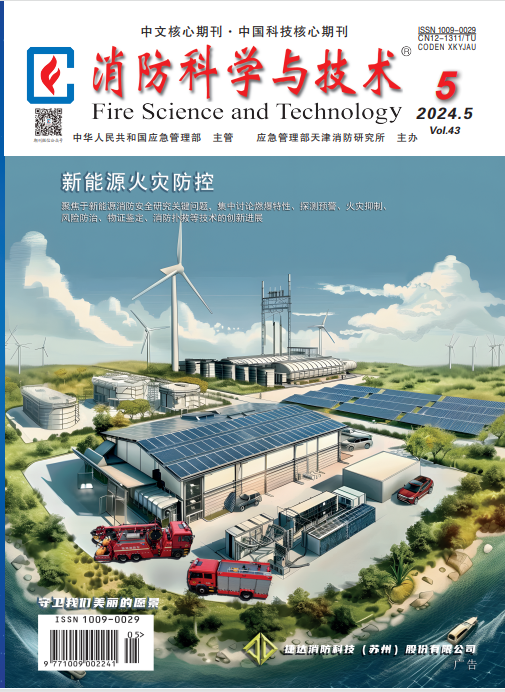|
|
Research on strategies and effects of thermal runaway control after the rupture of lithium iron phosphate battery safety valves
Chen Shuwen, Liu Kai, Song Zhenxuan, Lv Nawei, Jiang Xin, Jin Yang
2024, 43 (5):
687-692.
In order to study the effect of thermal runaway suppression after the rupture of lithium iron phosphate battery safety valves, an experimental platform for detecting thermal runaway characteristics was constructed. Firstly, the thermal runaway jet of the battery was divided into stages, and then the influence of cutting off power supply at different times on the phenomenon characteristics, temperature, and combustible gas concentration characteristics of thermal runaway was compared and analyzed. The results show that after the safety valve of the lithium iron phosphate battery is opened, there are two jettings, with a time interval of about 10 s. When the safety valve opens, accompanied by a small amount of gas ejection, the power supply is immediately cut off, and the internal reaction stops accordingly, and there is no second ejection from the valve. After the second jetting, the battery enters a completely thermal runaway state. If the power is cut off immediately at this time, the surface temperature of the battery continues to rise for a long time, with the highest temperature reaching 93 °C. If the power is cut off again 2 minutes after the second jetting, the surface temperature of the battery continues to rise to 200 °C. Compared with cutting off the power during the second jetting, the maximum temperature difference is 107 °C, and the maximum differences in H2 and CO volume fraction reach 7.09×10-4 and 3.28×10-4, respectively. In response to the thermal runaway warning after the safety valve opens, effective warning and thermal runaway suppression methods should act between the first and second jettings, which can prevent the rapid rise of battery temperature, reduce the ejection of combustible gases, and reduce the risk of fire and explosion.
Related Articles |
Metrics
|



